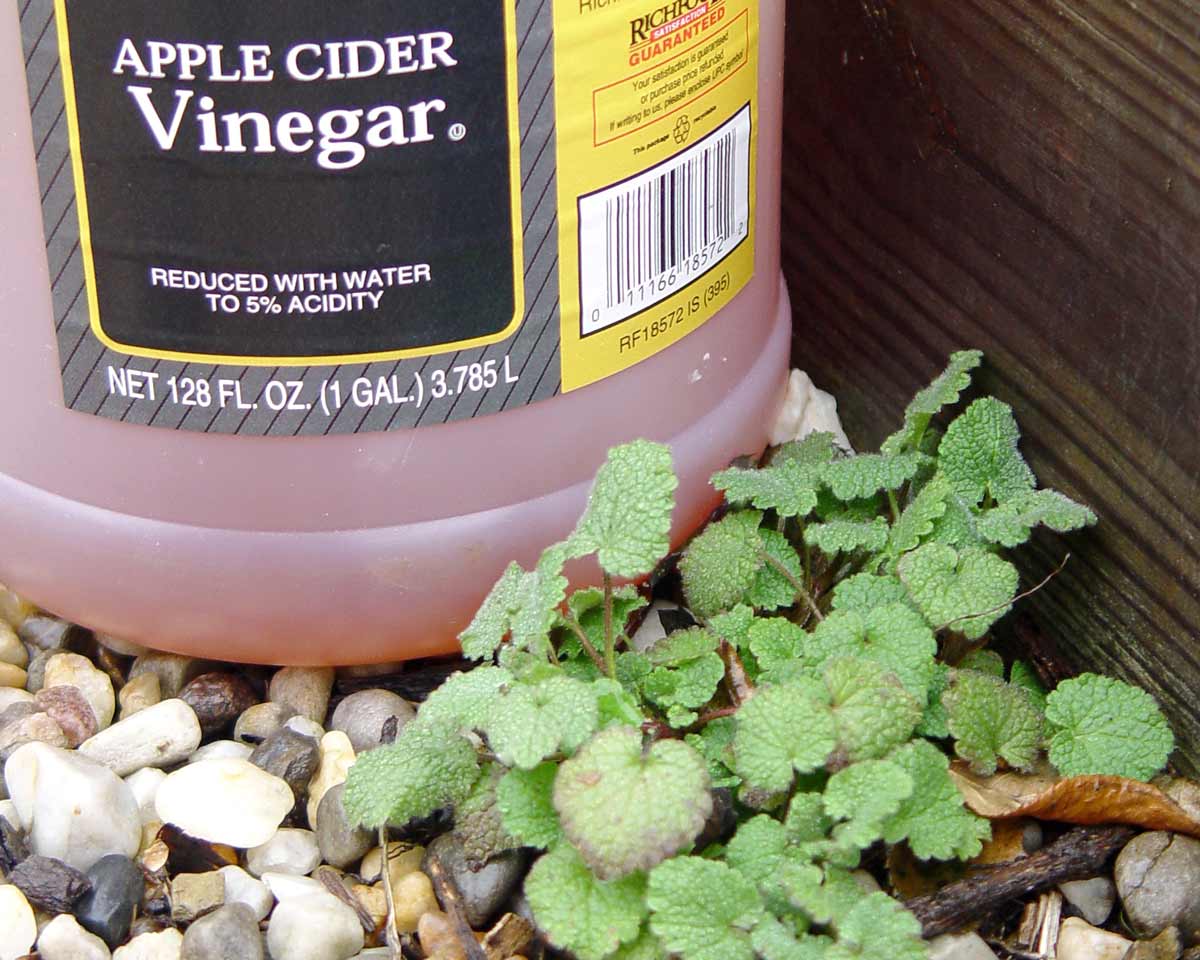A Weed Killer Is Not the Same as a Weed Preventer
How to make sure you’re using the right weed control product to achieve the results you want.
Gardeners are sometimes tempted to use assorted homemade and household concoctions to kill weeds in the yard.
In some cases, the motivation is to save money instead of buying bottles or bags of commercial herbicides.
In other cases, gardeners believe that homemade, do-it-yourself products are “safer” than store-bought pesticides.
However, DIY users often don’t realize that household products also can be harmful to people, plants, and the environment, especially if they’re used in unintended ways. And they often don’t work well, particularly long-term when it comes to killing weeds instead of just burning back the top growth.
Nevertheless, the Internet and social media are filled with recipes that include ingredients such as vinegar, salt, rubbing alcohol, boiling water, borax, citrus oils, bleach, baking soda, lemon juice, and various soaps.
Extension services and the U.S. Environmental Protection Agency (EPA) widely discourage using such products or mixes of them, pointing out that they’re unproven and usually rooted in something that seemed to work in observations by one or a few individuals.
“It’s important to keep in mind that anyone can post anything and make it look believable,” writes University of Illinois Extension educator Michelle Wiesbrook. “All the author needs is a recipe using easy-to-access ingredients, an adjective like ‘amazing’ or ‘best,’ and a pretty picture to draw attention to it. These little DIY gems spread like wildfire on social media.”
Proof vs. guesses
The biggest difference between commercial herbicides and DIY ones is that commercial ones have undergone extensive testing. They’re tested not only for effectiveness but also for safety precautions, mix rates, and what happens to the product once it’s in the environment.
All of that has to meet EPA standards to be registered as a pesticide, and key information is then required to go on product labels.
Those labels are the law for using the product. Products that don’t meet the standards aren’t approved for sale. And using a product as a pesticide that isn’t registered – including a DIY one – is technically illegal, according to EPA.
Since household products aren’t made or sold for pesticide use, they don’t undergo that same testing and registration. They don’t have proven herbicide dose rates, and their labels don’t have to carry safe-use directions for anything other than their intended use, which is often as a cleaner.
That leaves it up to the user, for example, to determine whether safety glasses and gloves should be used while spraying plants, and it makes mix rates a guess instead of levels determined by controlled testing.
Because of the lack of instructions for herbicide use and the belief that common household products are “safe,” DIY users tend to under-estimate hazards.
Promotors of DIY recipes feed that by often highlighting words such as “organic” and “natural,” leading gardeners to conclude that those terms equate to “safe” while the word “chemical” equates to “danger.”

Vinegar is a leading household product mentioned as a DIY weed-killer. Note that like most kitchen vinegars, this one is diluted to 5 percent acetic acid. Photo by George Weigel
Vinegar is one of the most common household ingredients suggested for weed-killing. While strong-enough concentrations of acetic acid – the type of acid in vinegar – can kill weeds, household vinegar typically is diluted to a 5 percent solution. That level may burn a plant’s top growth but is seldom strong enough to kill roots, which usually sprout new growth within days.
Stronger solutions are sold at 10 and 20 percent acetic acid, and some go as high as 45 percent. While those are capable of killing weeds (and are usually legally labeled as an herbicide), they’re also effective at burning skin and damaging eyes.
As with commercial herbicides, care is also needed to prevent spray from drifting onto and killing nearby garden plants – not just weeds.
A longer-term potential problem is that frequent vinegar applications can lower soil pH, making the soil too acidic for the good growth of most plants.
Some recipes add salt to vinegar to make an even more weed-toxic mix.
While salt is one of the oldest herbicides, its main drawback is that it can build up in the soil, where it’s slow to degrade, disruptive to earthworms and beneficial soil microbes, and capable of moving into nearby soil to harm untargeted plants.
Salt runoff also adds to stormwater pollution of ponds and lakes, where it can kill aquatic life – one of the same concerns gardeners have about pesticide use.
Most herbicides break down in the soil quicker than salt, which can remain at plant-toxic levels for years if overdone.
Rubbing alcohol and borax are two other DIY ingredients that are slow to break down in the soil and relatively weak in weed-killing ability.
Even boiling water can harm soil microbes in addition to being a scald potential and a not-so-convenient way to cope with weeds.
The worst DIY idea is mixing chlorine bleach with the ammonia compounds found in many cleaning products. That combo produces a potentially deadly chloramine gas.
Says Wiesbrook: “Unfortunately, the disadvantages of home remedies often outweigh the advantages. These products don’t contain labels with safety or rate information, and yet they can still be hazardous to your health.”